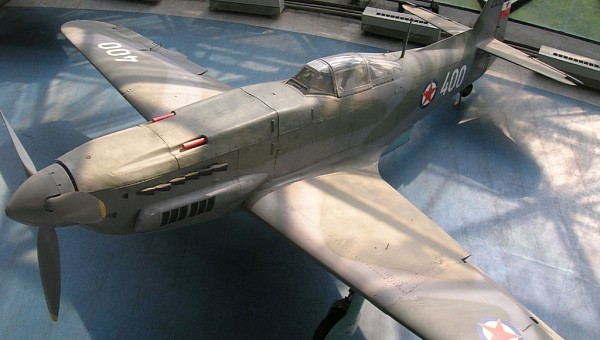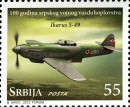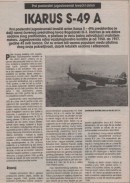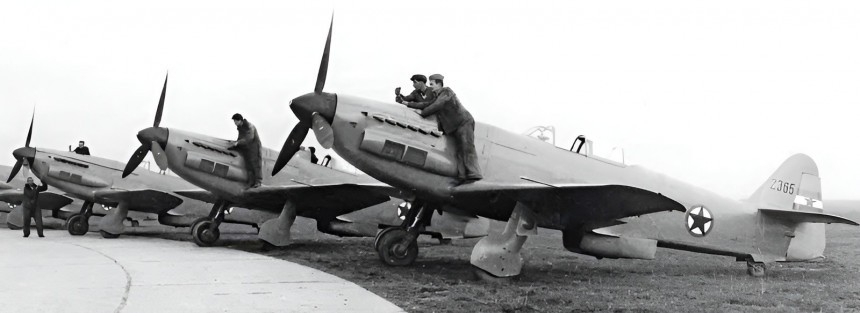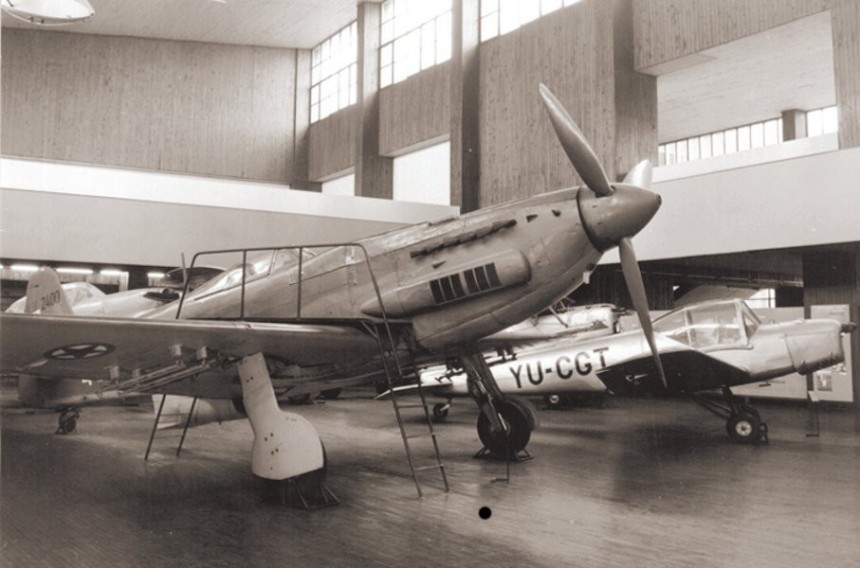Yugoslavia was one of the most surreal places to visit in the world in the second half of the 20th century, and they had an eternally polarizing leader to match in Josip Broz Tito. There's a theory that Joseph Stalin's death in 1953 wasn't a stroke but rather a poisoning as revenge for trying to take out Big Tito.
On top of all that, Tito's Yugoslav Air Force was an eclectic collection of aircraft from the various superpowers that its dictator of a leader was all too happy to pit against each other for lucrative military contracts. But it'd take until 1949 for the new country to field its own unique fighter airplane. This is the story of the S-49, the Yugoslav answer to the Spitfire and the Mustang.
In the immediate aftermath of the Second World War, the still rebuilding Eastern Europe had a wealth of one thing, perhaps more than anything. That being fresh-from-battle war vehicles and equipment rife for the taking. Be it Warsaw Pact or UN/NATO hardware, or heck, even old German Wehrmacht equipment, the Yugoslavs were spoiled for choice.
As far as the Yugoslav Air Forces were concerned, that meant a surplus of De Haviland Mosquitos, Yakovlev Yak-3s, and Republic P/F-57 Thunderbolts formed the backbone of the newly independent Yugoslavian Air Force. But those alone wouldn't be enough. Josip Broz Tito and his military advisers understood in the late 1940s that a good military of the day needed a definitive native fighter plane.
Think along the lines of the British Spitfire, the American Mustang, or the German Bf-109. What Yugoslavia desired very much was its own equivalent. No wonder the Ikarus S-49 looks like the result of a love triangle between a P-51 Mustang, a Yak-3, and an Mk24 Spitfire. Make no mistake, Yugoslavia's first native post-war piston fighter was no knockoff.
At a time when only a handful of communist nations had access to an in-house designed native fighter, Yugoslavia joined the Eastern European Block, as well as Czechoslovakia, Poland, and Romania, as the highlights among a small pool of Communist nations that built their own fighter planes after the war.
After the Tito-Stalin split of 1948 especially, the S-49 project was a matter of the utmost importance inside Yugoslavia. The task of building it was entrusted to what was at the time known as Ikarus. When in times of peace, the company was based in the Yugoslav capital of Belgrade and primarily focused its efforts on manufacturing unpowered gliders before the war.
Alongside all of this production were small production runs of license-built British airplanes like the twin-engine Bristol Blenheim and the Hawker Fury, among a few Czechoslovak and French designs sprinkled in at times. Decades later, the company transitioned to building buses under the name Ikarbus. This was much to the confusion of the Hungarians, who happened to also have a native bus manufacturer conveniently named Ikarus Bus as well.
To give credit where it's due, Ikarus was quite adept at the large-scale industrial manufacturing vital for a global war effort. Before the war, the company even owned its own airfield. But the first result of their efforts on a post-war fighter was the S-49A, powered by a Soviet M-105 V12. A rough copy of an old Hispano-Suiza 12Y from Spain. The updated S-29B sported a German Daimler-Benz engine, and by the S-49C, Ikarus managed to source the Hispano-Suiza engine that the S-49A's Soviet engine was copied from in the first place.
The results were quite impressive, even if the era of piston fighters was nearing its end at this stage. The prop-era would soon after end decisively with the ceasefire of the Korean War in 1953, in which piston-engined fighter planes were featured with prominence for perhaps the last time in history on a large scale.
In some ways, the Yugoslav S-49 borrowed cues from Allied fighters like the P-51 Mustang. Sporting two M2 Browing 50. caliber machine guns in a nose-mounted cowling very much similar to Brownings that a P-51D Mustang carried six of at a time. On top of that, a propeller-hub mounted German MG-151 autocannon with 15×96mm custom-tooled cartridges took care of the heavy lifting, kind of like a Bf-109.
First flown in June of 1949, the S-49 flew at a time of relative peace throughout Europe. Not exactly a guaranteed thing to the known European history of the last thousand years or so. That being the case, we can't find any record of Yugoslavia's first post-war fighter duking it out with a Russian La-5, American F4U Corsair, British Spitfire, or any of its contemporary piston fighters for that matter. Today, the S-49 is relegated to museum duty. As an ambassador for the fascinating history of the former Yugoslavia.
In the immediate aftermath of the Second World War, the still rebuilding Eastern Europe had a wealth of one thing, perhaps more than anything. That being fresh-from-battle war vehicles and equipment rife for the taking. Be it Warsaw Pact or UN/NATO hardware, or heck, even old German Wehrmacht equipment, the Yugoslavs were spoiled for choice.
As far as the Yugoslav Air Forces were concerned, that meant a surplus of De Haviland Mosquitos, Yakovlev Yak-3s, and Republic P/F-57 Thunderbolts formed the backbone of the newly independent Yugoslavian Air Force. But those alone wouldn't be enough. Josip Broz Tito and his military advisers understood in the late 1940s that a good military of the day needed a definitive native fighter plane.
Think along the lines of the British Spitfire, the American Mustang, or the German Bf-109. What Yugoslavia desired very much was its own equivalent. No wonder the Ikarus S-49 looks like the result of a love triangle between a P-51 Mustang, a Yak-3, and an Mk24 Spitfire. Make no mistake, Yugoslavia's first native post-war piston fighter was no knockoff.
After the Tito-Stalin split of 1948 especially, the S-49 project was a matter of the utmost importance inside Yugoslavia. The task of building it was entrusted to what was at the time known as Ikarus. When in times of peace, the company was based in the Yugoslav capital of Belgrade and primarily focused its efforts on manufacturing unpowered gliders before the war.
Alongside all of this production were small production runs of license-built British airplanes like the twin-engine Bristol Blenheim and the Hawker Fury, among a few Czechoslovak and French designs sprinkled in at times. Decades later, the company transitioned to building buses under the name Ikarbus. This was much to the confusion of the Hungarians, who happened to also have a native bus manufacturer conveniently named Ikarus Bus as well.
To give credit where it's due, Ikarus was quite adept at the large-scale industrial manufacturing vital for a global war effort. Before the war, the company even owned its own airfield. But the first result of their efforts on a post-war fighter was the S-49A, powered by a Soviet M-105 V12. A rough copy of an old Hispano-Suiza 12Y from Spain. The updated S-29B sported a German Daimler-Benz engine, and by the S-49C, Ikarus managed to source the Hispano-Suiza engine that the S-49A's Soviet engine was copied from in the first place.
The results were quite impressive, even if the era of piston fighters was nearing its end at this stage. The prop-era would soon after end decisively with the ceasefire of the Korean War in 1953, in which piston-engined fighter planes were featured with prominence for perhaps the last time in history on a large scale.
In some ways, the Yugoslav S-49 borrowed cues from Allied fighters like the P-51 Mustang. Sporting two M2 Browing 50. caliber machine guns in a nose-mounted cowling very much similar to Brownings that a P-51D Mustang carried six of at a time. On top of that, a propeller-hub mounted German MG-151 autocannon with 15×96mm custom-tooled cartridges took care of the heavy lifting, kind of like a Bf-109.
First flown in June of 1949, the S-49 flew at a time of relative peace throughout Europe. Not exactly a guaranteed thing to the known European history of the last thousand years or so. That being the case, we can't find any record of Yugoslavia's first post-war fighter duking it out with a Russian La-5, American F4U Corsair, British Spitfire, or any of its contemporary piston fighters for that matter. Today, the S-49 is relegated to museum duty. As an ambassador for the fascinating history of the former Yugoslavia.
